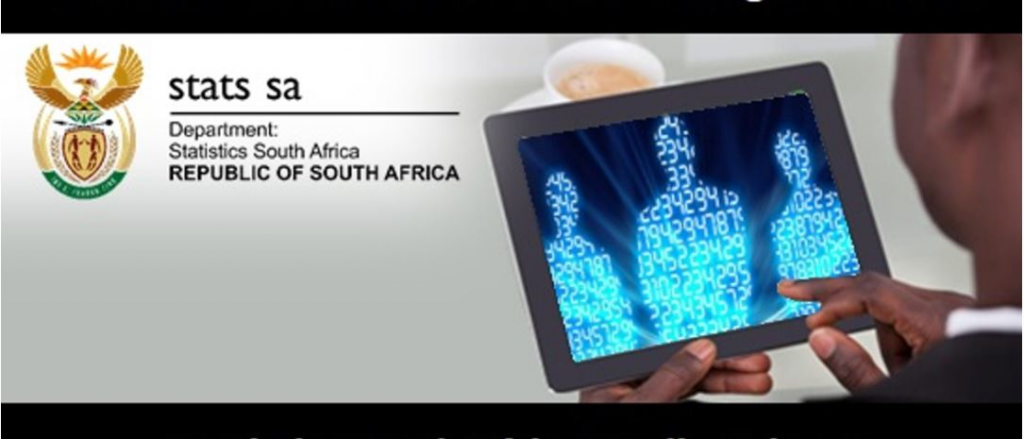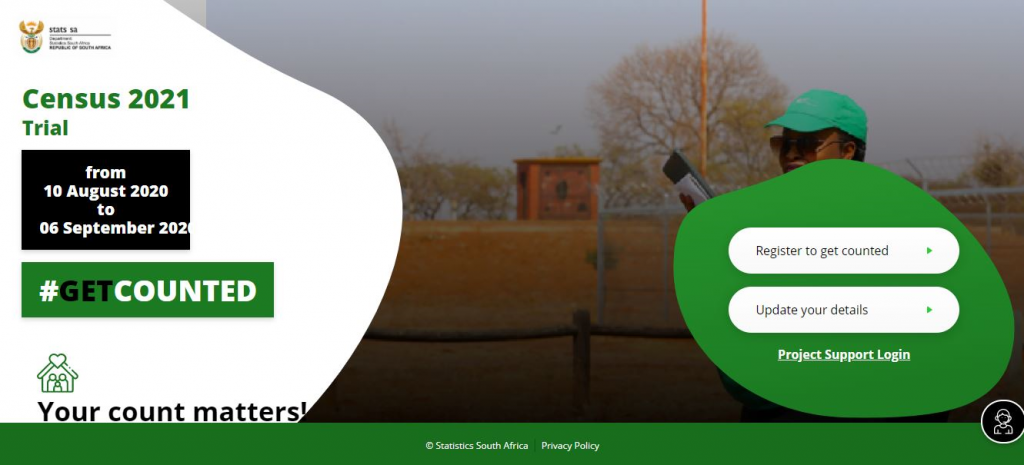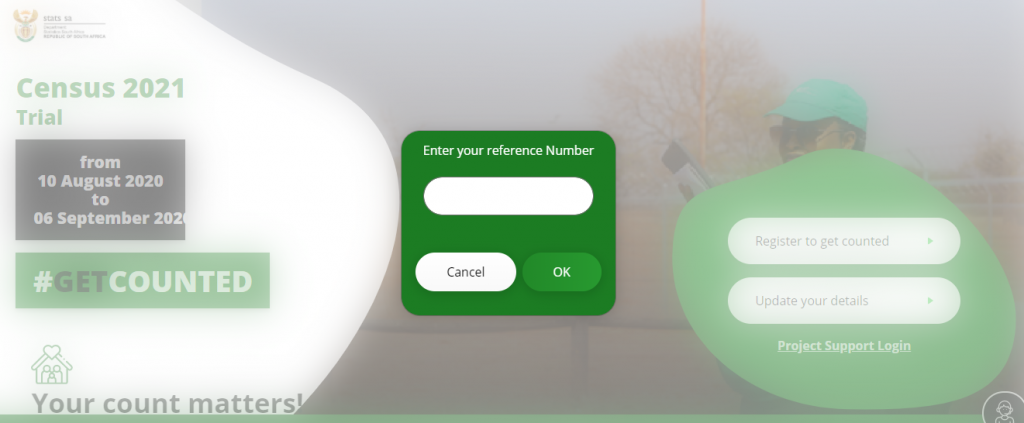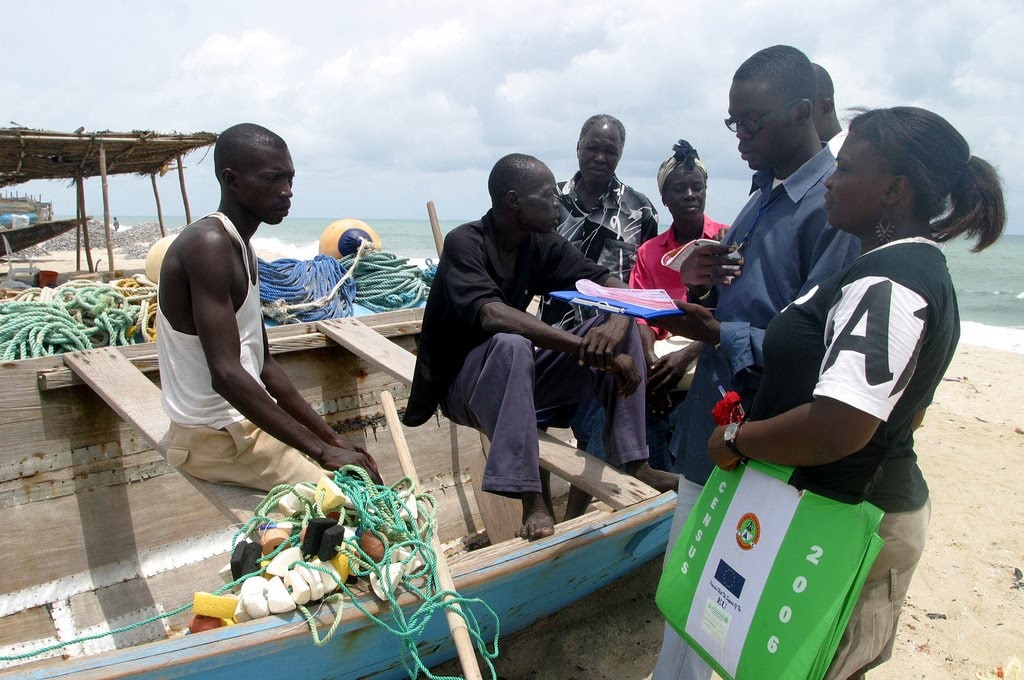South Africa kicked off its first-ever digital census yesterday in selected parts of the country. The pilot exercise has been set up by Statistics South Africa (Stats SA) as a trial model that can be replicated for Census 2021. South Africa becomes the fourth African country to conduct a digital census after Swaziland, Malawi, Ghana and Kenya.


We will use a multi-modal approach; meaning that for difficult and hard to reach areas in the census, we will still go and used paper-based [data collection. But it will depend on a lot of things if the COVID-19 environment subsides.
Statistician-General of South Africa Risenga Maluleke
The strategy employed by Stats SA to successfully administer the digital census trial include key factors such as data collection and population reach. This is similar to the strategies adopted by Swaziland and Kenya.
Data Collection via Internet and Mobile
Registration for the census can be done through the internet or mobile connection. Internet registration could be carried out via a smartphone or computer. Citizens simply need to visit the Stats SA website to access the census registration portal.
There are no field agents or enumerators to take separate headcounts at various locations, due to the COVID-19 pandemic so the entire process has to be digital.
The respondent has to enter his or her personal data into the system and submit for verification. If the respondent is a child, it is expected that the parent or guardian renders proper assistance and guidance.


When done with the online registration, the respondents are assigned a unique reference number. Then they can then proceed to update further details as subsequently required.
An alternative way of registering for the census trial is through a telephone chat with an authorised Stats SA call centre agent. In this case, questions are asked over the telephone and answers are supplied by the respondent.


Due to the COVID-19 pandemic, there won’t biometric capturing system which would have helped to ensure greater security and prevent multiple registrations or impersonation.
Population Reach
Worldometer reports that South Africa has a population of more than 59 million as of August 2020. But only 36.54 million of this population are active internet users, according to Statista.


With reference to data collection, 38% of South Africa’s population (including children) lack access to the internet and will, therefore, be unable to participate in individual online registration.
This implies that the digital census is currently not able to cover the entire South African populace, hence the prospect of complementing it with the paper-based count. Nevertheless, digital census remains the faster and more accurate process.
For instance, of the 1.125 million people stated as the Swaziland population in 2017 by Worldometer, the 2017 digital census results reported a population of 1.093 million in the country at 97% accuracy. Considering the relatively small population of Swaziland, higher data processing accuracy is logically expected.
Digital Census in Africa
As earlier mentioned, South Africa is not the first country to conduct digital elections in Africa. Swaziland carried out an online based census in 2017 while Kenya replicated the same two years later.
Kenya’s 2019 Digital Census
Kenya held its first-ever digital census in November 2019, ditching pen and paper for a digital process, while filling out a form online. The census is carried out by officials who visit people house to house recording information on electronic tablets. These tablets, in turn, send the information to a central database.
Kenya also became the first African country to count intersex people. This earned the country the applause of both local and international activists and human right bodies.
Mobile data collection and analysis platform, Hoji, was used to collect personal data of citizens during the 2019 Kenya digital census. Enumerators used Hoji to gather the required information of respondents by simply guiding them to supply answers to the questionnaires administered via the mobile app.
MTN Swaziland
April 29, 2017 was a historic day in Swaziland as the country conducted its first-ever digital census. The exercise utilised mobile ICT to capture data and relevant information. Tablets were employed by enumerators who went from community to community.
MTN Swaziland, the country’s largest mobile network operator, partnered with the Government of Swaziland through the Central Statistical Office to design a system for data collection, used by field agents during the 2017 Swaziland Digital Census.
The 2017 Population and Housing Census is a very special census because it represents a major shift in the collection of census data, that is; from a paper based data collection system to one that is digital.
UNFPA Representative Sharareh Amirkhalili
A major problem with digital censuses in Africa stems from distrust the people have for governments. This distrust makes them unwilling to reveal personal details to government officials.
Digital Census’ prospect in Nigeria
Nigeria’s last population census took place as far back as 2006. The census was acclaimed by many observers to be wrought with discrepancies. According to a Quartz Africa article, then governor of Cross River State, Donald Duke was quoted to have given raw figures as over 200 million but after the processing, the final figure came down to 140 million.


Population censuses are more or less political and economic weapons. In Kenya for instance, distribution of funds is determined through population figures. Constituency boundaries are also drawn using these figures.
The situation is not very different in Nigeria where federal and state government falsify outcomes to attract more political and economic benefits to their areas of interest. This has been a major factor militating against the conduct of successful exercises in the country.
With these economic and political factors still very much in consideration by the governments in power, it might be difficult to adopt technology in the conduct of population exercises.
As of August 2020, Nigeria has a population of about 207 million people from Worldometer statistics. Although Nigeria’s digital population stands at a satisfactory 99 million, it is imperative to note that just over 40% of Nigerians are connected to the internet and only about 13% are active on social media.
For Nigeria to carry out a digital census, the government has to be ready and willing to provide adequate funding to procure en masse tools such as tablets and biometric scanners as well as leverage current digital technologies and platforms that will help number the most populated country in Africa in the most accurate way possible.
Featured Image Source: BBC News






